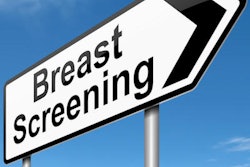Dear AuntMinnie Member,
Breast MRI might be a good tool for screening more than just the high-risk women it's been reserved for until now. That's according to a new study from Germany that we're highlighting in our Women's Imaging Community.
Dr. Christiane Kuhl of Aachen University led a study in which breast MRI was used to screen asymptomatic women ages 40 to 70 who had less than a 15% lifetime risk of breast cancer (with 12% being average risk). Breast MRI is typically only recommended for those with a risk of at least 20%.
The group found that adding breast MRI to the screening protocol detected additional cancers -- most of them invasive -- and many of them were visualized only on MRI scans. What's more, the cancers found were small, with a median size of 8 mm, and were node-negative, meaning the modality had caught disease before it could spread. Learn more about these intriguing results by clicking here.
Synthesized 2D DBT gets thumbs-up
In another encouraging study that came out this week, researchers from Delaware found advantages to using synthesized 2D digital breast tomosynthesis (DBT) for screening compared with conventional DBT and full-field digital mammography (FFDM).
Synthesized 2D DBT was developed to address a shortcoming of DBT: the need for a 2D FFDM acquisition to accompany the 3D DBT exam. This adds additional radiation dose to screening. With synthesized 2D DBT, the 2D image is created from the 3D data.
The new study comes from a site that used synthesized 2D DBT to screen more than 16,000 women. The new technology had a lower recall rate than either FFDM alone or FFDM with DBT, with no statistically significant difference in the cancer detection rate, the researchers found.
Will the new study clear the way for synthesized 2D DBT to be used more routinely for screening? Learn more about the study by clicking here, or visit our Women's Imaging Community at women.auntminnie.com.
Low-yield imaging
Finally, be sure to visit our Imaging Informatics Community for a new article that looks at when it might be the right call to perform imaging exams classified as "low yield" by clinical decision-support software. Click here to read the story, or visit our Imaging Informatics Community at informatics.auntminnie.com.


.fFmgij6Hin.png?auto=compress%2Cformat&fit=crop&h=100&q=70&w=100)





.fFmgij6Hin.png?auto=compress%2Cformat&fit=crop&h=167&q=70&w=250)











